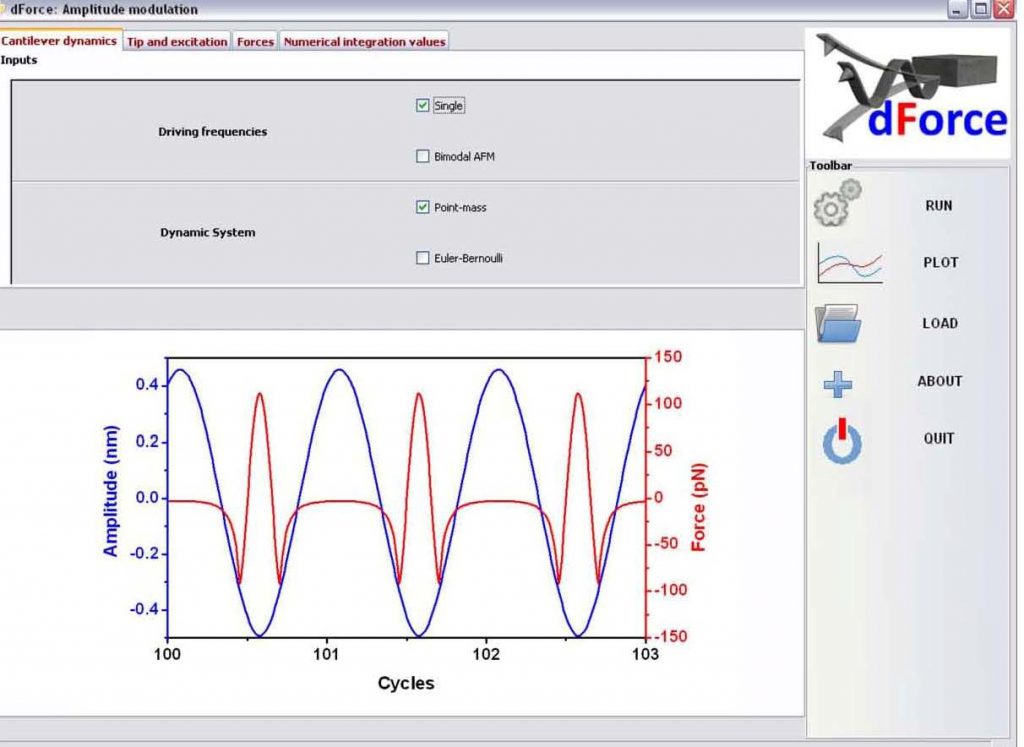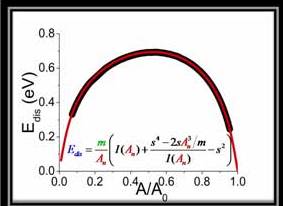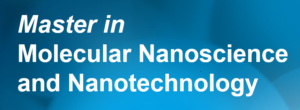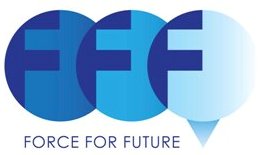We have developed an interactive dynamic AFM simulator (dForce) which is based on the experience and knowledge accumulated in Garcia’s group over 20 years of simulations. The code is valid for air or liquid environments, soft or hard materials, small or large amplitudes, conservative and non-conservative forces and single or bimodal excitation modes. Its accuracy has been tested against previous numerical simulations. The dForce simulator will be useful to either devise the optimum experimental conditions in terms of amplitudes, peak forces, material properties sensitivity and spatial resolution or to explain the experimental data in standard and non-standard dynamic AFM configurations. The code is open-source; it is compatible with Linux and windows operative systems and it can be freely downloaded from our web page.
Publications
H. V. Guzman, P. D. Garcia and R. Garcia, Dynamic force microscopy simulator
(dForce): Planning and understanding tapping and bimodal AFM experiments, Beilstein J. Nanotechnology 6, 5403-5410 (2015).
A. F. Payam D. Martin-Jimenez and R. Garcia Force Reconstruction from tapping mode force microscopy experiments. Nanotechnology , 26, 185706 (2015).
J.R. Lozano and R. Garcia, Theory of multifrequency AFM, Phys. Rev. Lett. 100, 076102 (2008).
R. Garcia, C.J. Gómez, N.F. Martinez, S. Patil, C. Dietz and R. Magerle, Identification of nanoscale energy dissipation processes by dynamic AFM, 9Phys. Rev. Lett. 97, 016103-4 (2006).
R. Garcia and A. San Paulo, Attractive and repulsive tip-sample interaction regimes in tapping-mode atomic force microscopy, Physical Review B 60, 4961-4966 (1999).
J. Tamayo and R. Garcia, Effects of elastic and inelastic interactions on phase contrast images in tapping-mode scanning force microscopy, Applied Physics Letters 71, 2394 (1997).














